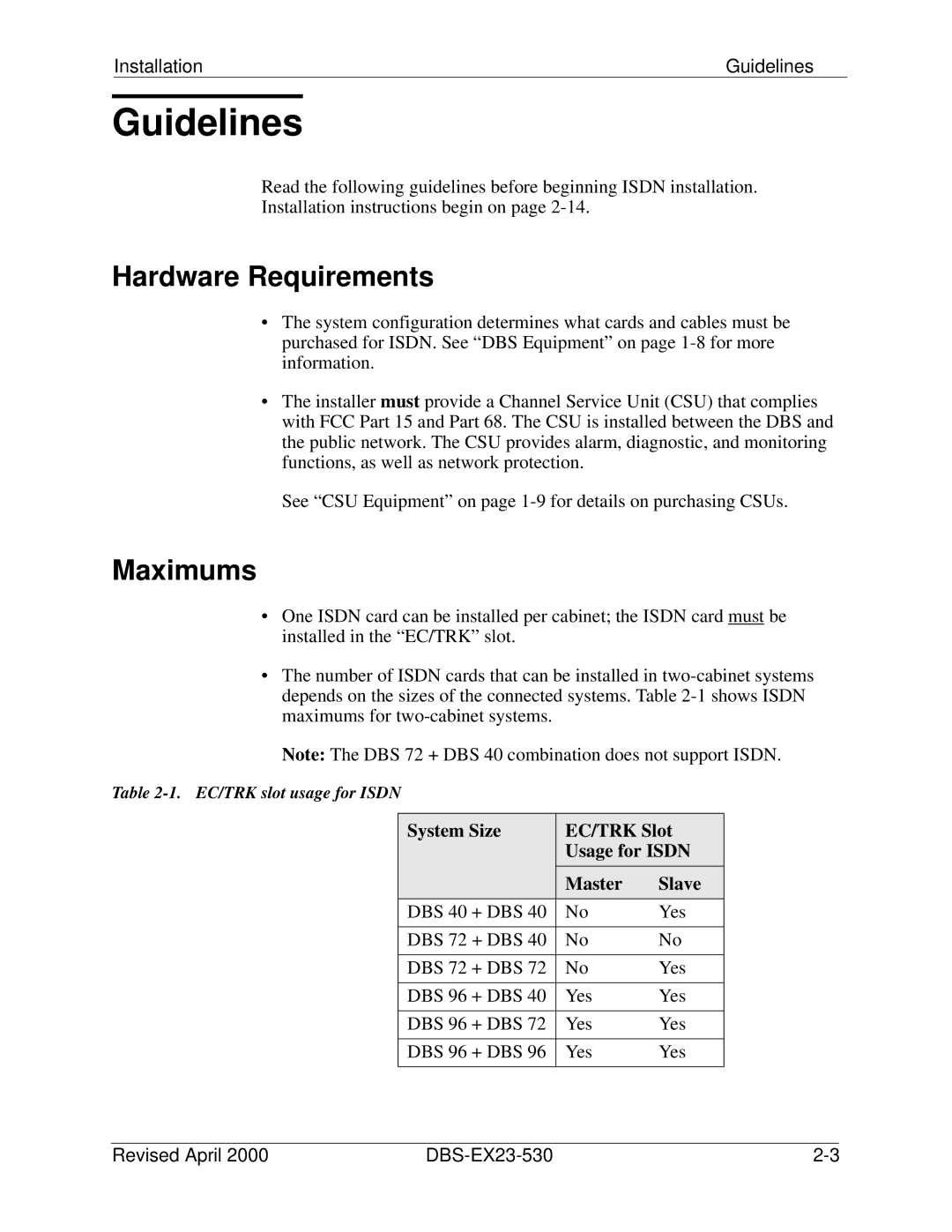Installation | Guidelines |
Guidelines
Read the following guidelines before beginning ISDN installation.
Installation instructions begin on page
Hardware Requirements
•The system configuration determines what cards and cables must be purchased for ISDN. See “DBS Equipment” on page
•The installer must provide a Channel Service Unit (CSU) that complies with FCC Part 15 and Part 68. The CSU is installed between the DBS and the public network. The CSU provides alarm, diagnostic, and monitoring functions, as well as network protection.
See “CSU Equipment” on page
Maximums
•One ISDN card can be installed per cabinet; the ISDN card must be installed in the “EC/TRK” slot.
•The number of ISDN cards that can be installed in
Note: The DBS 72 + DBS 40 combination does not support ISDN.
Table
System Size | EC/TRK Slot | |
| Usage for ISDN | |
| Master | Slave |
DBS 40 + DBS 40 | No | Yes |
|
|
|
DBS 72 + DBS 40 | No | No |
|
|
|
DBS 72 + DBS 72 | No | Yes |
|
|
|
DBS 96 + DBS 40 | Yes | Yes |
|
|
|
DBS 96 + DBS 72 | Yes | Yes |
|
|
|
DBS 96 + DBS 96 | Yes | Yes |
|
|
|
Revised April 2000 |
